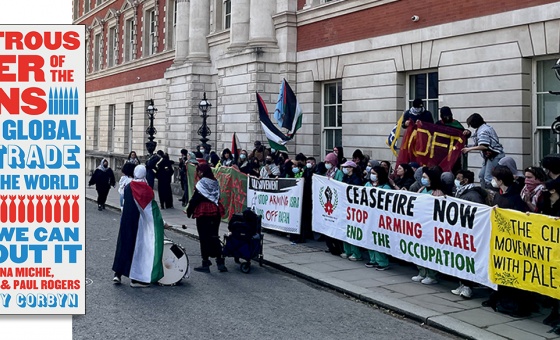This is the last article you can read this month
You can read more article this month
You can read more articles this month
Sorry your limit is up for this month
Reset on:
Please help support the Morning Star by subscribing here
THE armed forces of the US, the Philippines, and several of their allies started a massive military exercise in the Philippines on Tuesday October 15, amid growing concerns of rising external intervention and possibility of conflict in the Asia-Pacific region.
The joint military drill named Kamandang will continue until October 25. It will involve over 2,300 armed personnel, mostly from the US and the Philippines, with their allies Japan, South Korea, Australia and Britain contributing smaller numbers. It coincides with a massive naval exercise involving the same set of countries at northern Luzon Island in the Philippines, Reuters reported.
Though the countries participating in the exercise denied it was targeted at any particular country and claimed it is a defensive annual event, in the context of growing US interventions in the region targeting China, rising tensions between China and the Philippines due to disputes over islands in the South China Sea, and the recent collision of Chinese and Filipino naval vessels in the region, the basic objectives of the exercise are under scrutiny.
The US commanding officer of the Marine Rotational Force-Southeast Asia, Colonel Stuart W Glenn, said, in comments some allege denote an anti-China focus, that it is an effort through which the US and its allies reaffirm their “mutual commitment to regional security as we face the ever-evolving security environment that threatens a free and open Indo-Pacific.”
In the last couple of years, the US has, on several occasions, used the phrase “free and open Indo-Pacific” to justify its moves against China in the region.
Kamandang comes immediately after the Chinese military exercise, “the Joint Sword-2024B,” around Taiwan. China claimed the exercise was a “stern warning” to “separatists” on the island and their external backers such as the US. The US, despite officially adhering to the “one-China policy,” has been supplying arms and political support to groups who want an “independent Taiwan.”
The Kamandang exercise will involve live fire drills, an amphibious landing and drills related to defence against chemical and biological warfare in the Philippines’ Burgos, Ilocos Norte, and Basco and Itbayat in Batanes. All these regions face the Taiwan Strait, the South China Morning Post reported.
This is the second large joint US-Filipino exercise in the region this year. In May, armed forces from both countries conducted an annual Balikatan (shoulder to shoulder) joint military exercise for a week in Laoag City using live fire and imitating manoeuvres against maritime invasion close to Chinese borders.
The US has also held several military exercises with South Korea and Japan in the region earlier this year, mainly focused on North Korea. The large-scale military exercises have invited strong condemnations from North Korea and China, which term them provocative.
The US has also increased its overall military deployment in the region with more aircraft carriers, bombers and submarines in the region. It has recently deployed a mid-range missile launcher, Typhon, for the first time in the Asia-Pacific.
It has also invested heavily to upgrade its weapons deployment in the Philippines and build war infrastructure there. It has increased its military bases in the country from five to nine under a new defence agreement signed with the Philippines as a direct provocation to the Chinese.
Both China and Russia have demanded the withdrawal of the Typhon system, claiming it encourages an arms race in the region. Opposing the missile’s deployment, Chinese Foreign Minister Wang Yi said in September that such an action “undermines regional peace and stability.”
The US has been periodically bringing its allies in the region, such as Australia and Japan, together for military exercises. It has recently put greater emphasis on involving Nato in its regional military build-ups.
These moves have been noticed by North Korea and China, which have accused the US of wanting to build an Asian version of Nato. Though the US has denied this, the newly elected Japanese Prime Minister Shigeru Ishiba, its closest ally in the region, had recently proposed that such a formation of a “collective self-defence system” is “essential.”
This article appeared on Peoplesdispatch.org.












